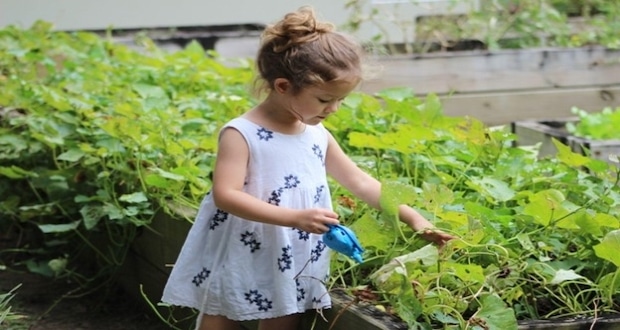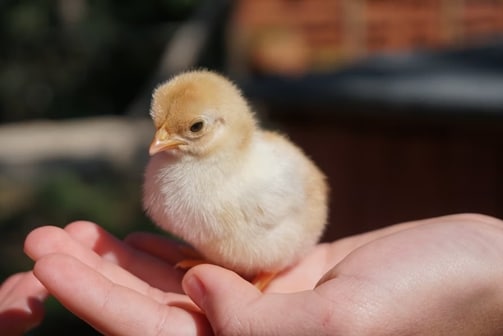Between the COVID-19 pandemic and the risk of worldwide food shortages, many overwhelming changes have occurred over the last few years. However, despite it all, hope emerged from the darkness when a garden boom spiked during the pandemic’s peak. One common question in the minds of many was how to start a home-based garden.
Although the USDA doesn’t predict a food shortage occurring in the U.S., gardening and harvesting your plants is a valuable skill that can be helpful for any period of food insecurity. Here’s why you and your family should build an outdoor garden and how to start one from scratch.
Why Start a Garden?
There are so many reasons to start a garden. Food shortages aside, gardening has many proven health benefits that promote community involvement and nurture people’s love of the outdoors.
One of the most beneficial reasons to start a garden is to help the environment. For example, starting a garden can support local ecosystems whose habitats may have been disrupted if you live in an urban area.
During the spring and summer, you can tend to your outdoor garden and take advantage of homegrown foods. You can still fulfill your green thumb during the winter months by caring for indoor plants.
Gardening is a fantastic stress reliever and a healthy activity to pass on to your family! Simply put, gardening is a fun and flexible hobby.
Why Should Families Get Involved?
Gardening is an excellent family activity, especially if you’re getting to know your stepchildren. Gardening makes you a role model for the environment, encouraging your family to care for nature.
Aside from the positive environmental impact of gardening, it’s a hobby that teaches children valuable skills they’ll take with them throughout their lives.
Gardening is also a traditional skill that spans centuries, incorporating the concept of passing on one’s legacy from one generation to the next. Gardening teaches children the importance of responsibility, helping them feel accomplished when their garden starts to thrive. Plus, it instills an environment of teamwork, helping your family bond as you tend to your garden.
Benefits of Having a Family Garden
Improved Health
Studies show that gardening improves your overall health and wellbeing. For one thing, healthy exposure to vitamin D positively affects the body.
Plus, gardening is a moderate exercise that uses every muscle in your body. This decreases the risk of age-related weight gain and promotes physical wellness.
Recent studies have shown promising correlations between gardening and increased mental health. For example, current researchers are conducting studies to see if gardening could decrease symptoms of dementia. Gardening also significantly reduces stress and decreases symptoms of mental illness.
Sustainable Practices
Simply put, gardening helps the environment. Gardens support plants and trees as they convert carbon into oxygen. This extends into the roots of the plants that provide fertile soil and filtered water.
When wildlife takes notice of a growing ecosystem, they begin to interact with the plants and develop their miniature habitat in your garden.
Gardens attract vital animals like honey bees, who return the favor by keeping your plants healthy and vibrant. Gardens are particularly homesteads for pollinators, insects, and birds.
Gardening helps you feel good about taking care of the planet and reducing your carbon footprint.
Moderate Physical Activity
As mentioned previously, gardening is considered a relatively moderate physical activity. Unlike high-intensity activities, gardening is a form of exercise accessible to all family members, even young children. This can make it a positive group exercise for your entire family, especially if you want to encourage your children to appreciate the outdoors.
This is confirmed by the CDC, which classifies gardening and yard work as an official form of exercise. The flexibility of gardening allows for exercise intensities to vary.
Basic planting and raking can qualify as light to moderate exercise, while intense shoveling might be more vigorous. Regardless of how vigorous the exercise is, you’ll always get a workout from gardening.
Full Access to Healthy Foods
Once your garden is ready, and the seeds are planted, you must harvest your plants! Depending on what you grow in your garden, you can have full access to various fruits and vegetables.
Aside from purchasing the seeds and other tools for your garden, you don’t have to pay for a single ingredient growing in your backyard.
This can also instill a healthy lifestyle in your children when they’re immediately introduced to fresh garden produce. When they’re encouraged to consume vegetables or other related produce, they will be more open to trying new foods in the future. Plus, gardening produce is a much more sustainable source of fruits and vegetables.
Quality Time
Gardening can be a fantastic bonding activity for anyone, but it can benefit blended families. Gardening is a flexible hobby one individual or an entire community can enjoy.
Thus, gardening may open up many bonding opportunities if you’re a newly blended family trying to get to know each other. When everyone needs to take care of the garden, it creates a shared responsibility that can coincide with quality family time.
Community Engagement
Speaking of community, gardens are a great way to engage with your surrounding neighbors. Plus, if your home isn’t suitable for an outdoor garden, you can still enjoy your favorite hobby by tending to your local community garden.
Encourage your entire family to participate by making it a fun weekly activity. Community gardens allow you to befriend your neighbors, reduce your carbon footprint, and nurture healthy ecosystems in urban settings.
How to Start a Home-Based Garden
-
Choose Your Location
If you’re starting a garden from scratch, it’s important to choose the best location for your plants. Consider thinking about what plants you’d like to grow, potential obstacles (i.e., rabbits and deer), and how you’ll access your garden for tending purposes.
You may also want to consider your area’s climate and how that might affect your garden. Select an area that gets several hours of direct sunlight while also being sheltered from potential storms.
-
Select What You’d Like to Grow
What kind of garden do you have in mind? Would you like to focus more on vegetables, herbs, flowers, or an amalgamation of plants? Of course, you must select what you want to grow before planting anything in your garden.
What is your area’s climate zone? If you’re growing edible plants, it’s best to focus on foods you know you’ll eat. Avoid purchasing large plants if you’re only interested in tending to a small garden.
-
Acquire Necessary Garden Tools
When you’re just starting, you may not have all the tools you need to tend to a garden properly. Consider investing in high-quality materials, even if they may be a little expensive initially.
Proper metal tools will reduce your risk of injury and make gardening more fun as opposed to feeling like a chore. Once your tools have been purchased, keep them sharp and clean to reduce premature deterioration. Here are a few good gardening tools for beginners:
- Garden shovel or D handle shovel
- Scuffle hoe
- Garden hoe
- Leaf rake
- Dirt rake
- Standard kitchen knife (for cutting produce)
- Hori Hori garden knife
- Garden gloves
- Battery-powered or rechargeable cordless drill
- Hand pruners
- Pruning Saw
-
Find a Water Source and Test Your Soil
Water is the life source of everything, and plants are no exception! Thus, when building your garden, you must ensure that you’re close to a water source. If you don’t have a nearby water source, you’ll need to invest in a hose to water your plants consistently.
Once you’ve established your water source, it’s time to test your soil. Some soil characteristics can be determined by observation. However, you may need to conduct a home test or invest in a professionally analyzed lab test. This can tell you details such as your soil’s pH level, its acidity, or if it contains any alkaline.
-
Prepare Your Garden Bed
Once you’ve accomplished all the previous steps, it’s time to start preparing and building your garden bed. Generally, you’ll decide between two options: raised or sunken garden beds.
Raised beds are visually appealing but more at risk of drying out. Sunken garden beds are great for building moisture in drier climates.
To start the building process, clear away the existing vegetation. To preserve the existing ecosystems beneath the ground, don’t till. Instead, gently remove surrounding grass and debris.
Spread a four-inch layer of compost on the planting area and separate each bed by four inches. If weeds continue to grow, consider adding sheet mulch to the garden.
-
Choose Your Seeds or Transplant Seedlings
Many beginner gardeners make the mistake of purchasing seeds to see immediate results. Growing plants can take a little more than simply placing them in the ground and watering them. Seeds can be quite fickle and take longer to sprout than expected.
As an alternative, beginner gardeners may consider starting with transplant seedlings. These can be purchased at your local greenhouse and transplanted into your garden.
Remember to keep plant size in mind since each has pros and cons and is merely a matter of preference.
-
Carefully Plant Your Seeds
Once you have your garden bed, tools, and seeds, it’s time to start planting! Most seed packets and transplant seedlings come with instructions on how to plant them properly.
However, as a general rule of thumb, it’s best to plant your seeds three times as deep as the seed’s diameter. Wait until frost risks have passed before planting, and be incredibly gentle with younger seedlings.
-
Create a Watering Routine
As mentioned earlier, water is essential to keeping your garden healthy. During the growing season, most plants require an average of an inch of water per week. Thus, you must water your plants regularly if you’re experiencing a dry season.
On the flip side, your plants should be more dry than wet to prevent root rot. To determine if your plants are too dry, stick a finger two inches into the soil. If it feels too dry, take some time to dampen your garden.
-
Maintain Your Garden
Once your garden is built and ready, the most challenging and expensive part is over. If you’ve accomplished all the previous steps, it’s mainly about maintaining your garden.
Pay attention to the changing seasons and research to determine if your plants require anything specific during these adjustment periods. However, on average, summer is all about watering, fall is devoted to garden clean-up, and spring should be focused on weed control.
-
Harvest Your Plants
Depending on your garden, you may be able to harvest some of your plants. Always do your research since certain plants take longer to grow and mature.
For example, leafy greens can be clipped and regrown for every harvest season. When they mature, crops like peas and beans can be harvested every two to three days.
Just remember to be kind to yourself, especially when you’re just starting. You won’t succeed with every plant immediately, and that’s okay! What matters most is the enjoyment you experience and the memories you make along the way. Here’s how gardening can help a stepdad.






